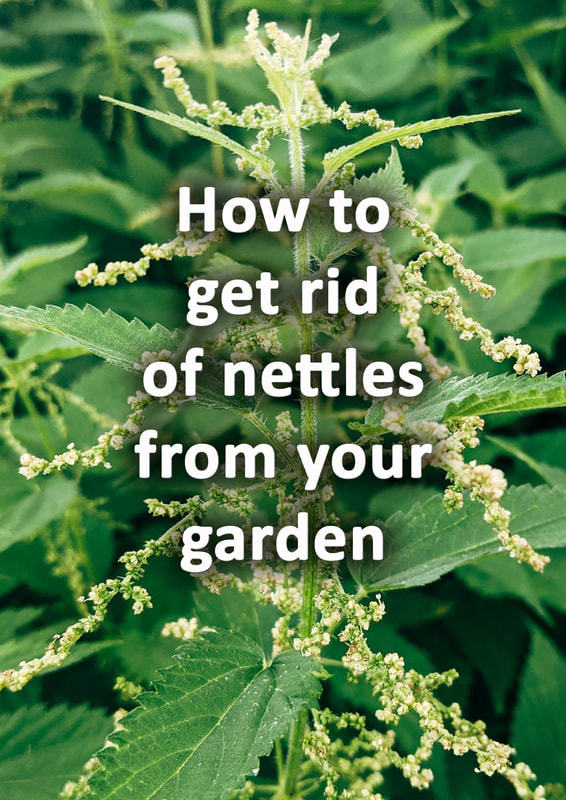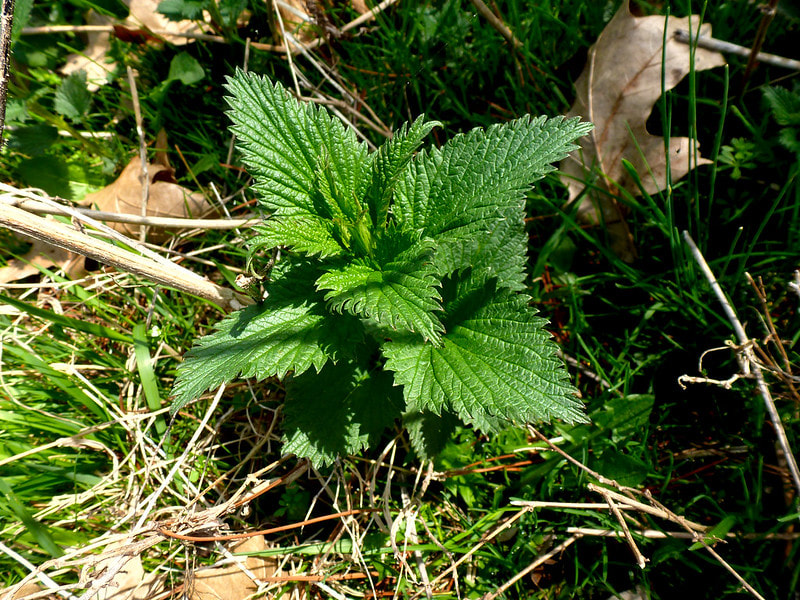|
This article contains affiliate links
Stinging nettles are common and widespread woodland perennial native to Europe, Asia and northern Africa. However these plants have now colonised much of the world including the United States and New Zealand.
This plant is notorious for its burning sting which causes pain and irritation to skin. Nettles are covered in hundreds of small spines which act as hypodermic needles. These can inject histamine and other irritant chemicals. Such defences have led to an affective survival strategy through the ages for this wild species. It has been discovered that nettles have been historically attracted to human settlements for generations. This is due to their love of soil rich in phosphates. Such phosphates are typical of human settlements due to the abundance of both fire ashes and animal bones.
However it is nettles within our gardens which can cause the most bother. Nettles have very long and elastic root systems which are difficult to eradicate.
Once established these roots can survive in the ground for long periods and are extremely drought resistant. Nettles are quick to grow and spread especially along boundaries or the edge of hedges. In this article we will list the 7 main ways to get rid of nettles from your garden. Pull them out by handOne of the quickest and most common ways of getting rid of nettles is by pulling them out. This requires three things to be successful; Thick gloves, a good length of stem and a loamy soil. If you have thick clay you may find that nettle stalks simply snap off at ground level. However with some experience this can become a very effective way to remove them. This is best done during a damp period during the summer when the nettles stems are long. However the disadvantage of this is you have to put up with nettles for half the growing season. Furthermore this normally leaves root fragments in the ground only for them to re-sprout the following spring. Dig out the root systems
The most important aspect of removing stinging nettles successfully is eliminating the roots from your soil. This can be very challenging as small segments of roots can break off and re-grow. Therefore it is best to approach this as something to be completed over a couple of seasons. Firstly dig up the main root clumps and shake off any excess soil. These will ideally be burnt or removed from site! Then dig through the soil and try to gather any loose sections of root and remove them. A good thing to do here is sieve the ground with a soil sieve to collect any smaller root fragments. Over the coming seasons you can pull out any new nettles which try to become established. Add lime to your soil
Nettles prefer to grow in soil which is more acidic. Therefore by changing your soil PH to alkaline you can make it less desirable for nettles to become established. The best way to do this is by adding chalk and lime to your soil. Mix it in well with your ground for a couple of seasons and take an annual soil PH test to monitor progress. Ground sheeting
Like most perennial plants, nettles require seasonal foliage growth to turn the suns energy into food. One of the ways you can disrupt this process is by sheeting over the ground. This can be done with thick plastic but the plastic may degrade in the sun. Cover it with a thin layer of mulch or soil to prevent sun degradation. Eventually the roots of the nettles will give up trying to grow. Ground sheeting is a good way to weaken nettles and stop them from sprouting. However there is always a threat they will simply try to run out to the sides of the sheeting. Sheet mulching
Sheet mulching is where a thick sheet mulch of cardboard or newspaper is applied to the soil. Traditional mulches like wood chip are then spread over the top. This creates a continuous barrier to emerging perennials and annual weed germination. Sheet mulching can be successful if it is deep enough. However If you have very established nettle clumps these can occasionally get through the sheet mulching. If you are going to try this method make sure you use a thick layer of mulch. Consume them
A good way to get rid of resident nettles in your garden is to eat them. Believe it or not nettles have been eaten for food for thousands of years. They need to be cooked to break down the stings but are very nutritious. Rural communities in Crete have a famous nettle pie that features regularly in traditional cook books. The nettles can also be used to make a delicious tea which is rich in vitamins and minerals. When harvesting nettles for culinary uses it is always best to harvest young shoots and leaves. Glyphosate
Glyphosate, also known as roundup is a common herbicide used in both agriculture and gardening. It works by inhibiting specific plant enzymes and proteins which they require to grow. This herbicide is very effective at killing stinging nettles when applied to their leaves. There has been no evidence that Glyphosate is in any way toxic to people or the wider environment. Understandably however many choose not to use herbicides in their garden for ethical reasons. However Glyphosate is a widely used herbicide in many available weed killers. All work effectively in getting rid of nettles from your garden.
If you are planning on removing nettles yourself visit our resource page or essential landscaping tools article here.
'As an Amazon associate I earn from qualifying purchases'
3 Comments
Melissa
4/18/2022 04:28:50 pm
You need to read up on Glyphosate. It is extremely hazardous to both humans and the environment.
Reply
Adrian
10/1/2022 11:42:21 pm
See the attached link for glyphosate sds.
Reply
Leave a Reply. |
The Author
|
Landscaping services across Buckinghamshire, Amersham, Aylesbury & High Wycombe
Hyde Heath, Amersham, Buckinghamshire |
|











